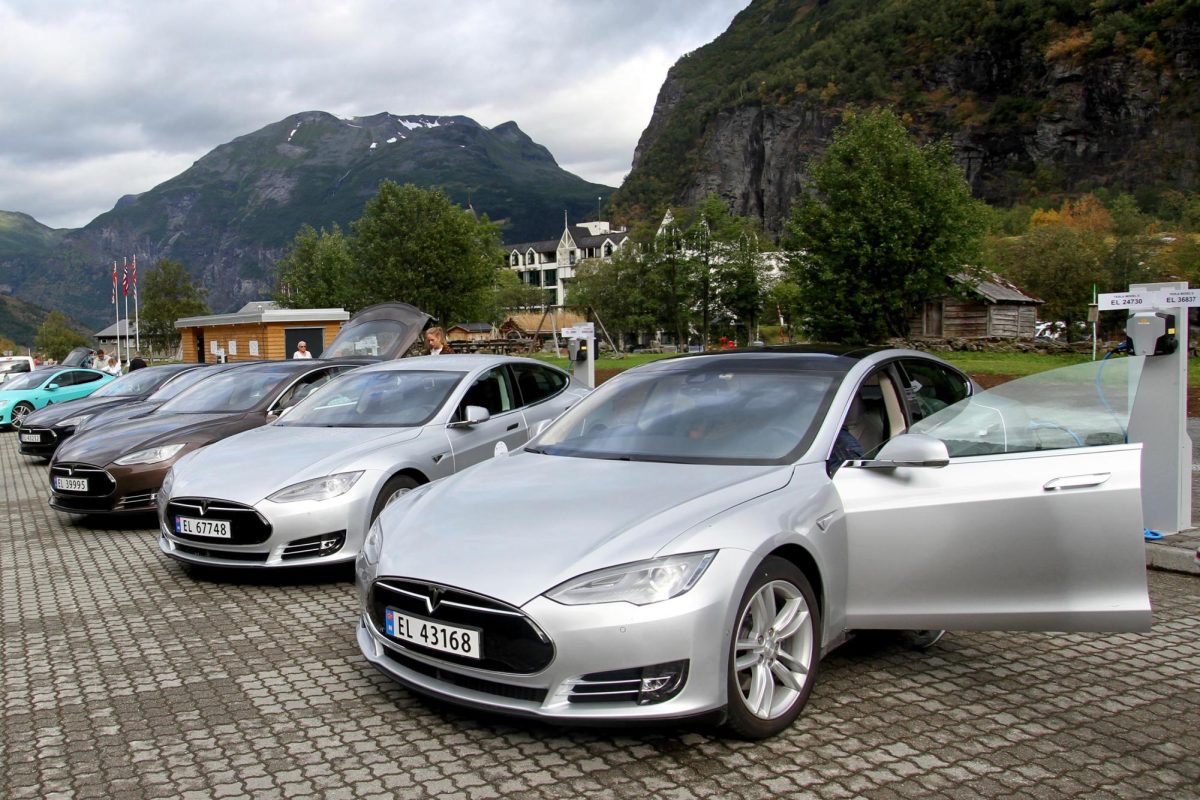Sustainable practices have become more integrated into our daily lives. Individuals across the globe gather to protect environmental rights and speak their minds on issues such as climate change. While there is still a long way to go, Norway is making beneficial advancements to the environment as they are on the path to becoming the first all-electric country.
92% of households in America own at least one car, but did you know that just one gallon of gasoline burns 8,887 grams of CO2? This scientific discovery has prompted a wave of cars that run on different types of fuel, such as biofuel and electricity.
As of this year, Norway has almost completely switched from gasoline engine cars to electric cars. About 90% of the country’s car sales are solely from electric vehicles. Other countries are falling behind in this race: the U.S., with only 8% of car sales being electric, and the UK with only 19%.
Since the 90s, Norway has increased its non-electric car taxes, making it more affordable to buy electric cars over diesel/petrol cars. Unlike other countries, Norway does not tax Chinese electric vehicle imports, making it an even more affordable option.
As the popularity of electric cars grows, many of Norway’s fuel pumps have been replaced with EV charging ports, making Norway more electric-friendly. The country also offers free parking, more lane access, and many other benefits to electric-car users. These bonuses are made possible by the Norwegian government’s active role and desire to positively impact the environment.
A common misconception about sustainable practices is that they don’t positively affect the economy, but rather, new studies have shown the opposite. One key example of sustainable innovation is the company Ascend Elements, which “recycles old lithium batteries … recovering 98% of materials and reducing demand for new metals” to build electric cars.
Through lowering the price of electric cars by reusing materials and creating benefits for electric car users, both Norway and Ascend Elements are making significant progress. They display how sustainable practices can benefit both the environment and the economy.
Sources:
EPA. “Greenhouse Gas Emissions from a Typical Passenger Vehicle.” United States Environmental Protection Agency, 23 Aug. 2024, www.epa.gov/greenvehicles/greenhouse-gas-emissions-typical-passenger-vehicle. Accessed 13 May 2025.
Jolly, Jasper. “Record Number of Electric Cars Were Sold in UK during 2024.” The Guardian, The Guardian, 4 Jan. 2025, www.theguardian.com/business/2025/jan/04/record-number-of-electric-cars-were-sold-in-uk-during-2024. Accessed 15 May 2025.
Lutte Engao, Estee. “Common Misconceptions about Sustainability.” Plasticbank.com, 2 June 2024, plasticbank.com/blog/misconceptions-about-sustainability/. Accessed 13 May 2025.
Montoya, Ronald. “What Is the Percentage of Electric Cars in the U.S.?” Edmunds, 12 Jan. 2024, www.edmunds.com/electric-car/articles/percentage-of-electric-cars-in-us.html. Accessed 15 May 2025.
Murray, Adrienne. “Norway on Track to Be First to Go All-Electric.” BBC, 13 Jan. 2025, www.bbc.com/news/articles/cg52543v6rmo. Accessed 13 May 2025.
Valentine, Ashlee. “How Many Vehicles Are There in the U.S.?” Forbes, 7 Mar. 2023, www.forbes.com/advisor/car-insurance/car-ownership-statistics/. Accessed 13 May 2025.







